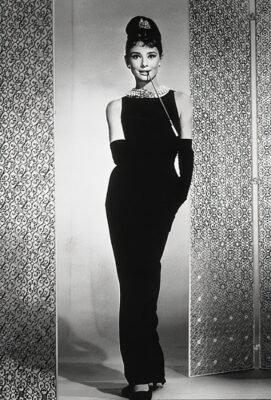Belgium, (Brussels Morning Newspaper) She was self-effacing—sometimes even a little insecure. She once famously said; “ I’m half Dutch and half Irish but I was born in Brussels, Belgium. If I was a dog, I would be a mess”! Her loving son said of his famous mother: “She would be the first to admit that she was not much of an actress. But boy!–she was a movie star !” Although humble about her talent, Audrey Hepburn remains one of the world’s most famous actresses and fashion icons of all time. There was so much more to her life’s story however. Interestingly, the chapters of her life
intersect with some of the most seminal events of the 20th Century. Consider…
Audrey Hepburn was born (1929) in Ixelles, Brussels to aristocratic parents. Her mother Ella van Heemstra, was a Dutch noblewoman and the daughter of the colonial governor of Dutch Guinea in South America. Audrey’s father was a British industrialist with business interests in both the Dutch colony and in Belgium. Both parents had strong political opinions ( fascist sympathies) that would prove to be very unpopular in the years to come. Audrey described her early childhood both as sheltered and privileged but this changed drastically with the German invasion of Belgium (April, 1940) and her parents’ subsequent divorce.
Audrey’s mother moved the family to Arnhem the Netherlands where their lives began a downward spiral of misfortune. They were distrusted by their Dutch neighbors because of the family’s German sympathies and viewed with suspicion by the occupying Germans because of their English sounding name. Audrey and her mother witnessed first-hand atrocities both within their family and in the everyday life.
The family’s financial situation was devastated and Audrey’s baroness mother was reduced to working as a cook, housekeeper, and other menial jobs. Food supplies were so scant that the occupation years have become known as The Winter of Hunger. She and her mother survived by eating endive, tulip bulbs and occasionally a potato. Audrey suffered from the effects of malnutrition resulting in acute anemia, asthma, jaundice and edema. By the end of the war, she weighed less than 40 kgs. This experience was so profound that it permanently effected Audrey emotionally but also her lifelong body-weight, bone density and slim build ….more about this later.

The family spent the post- war years in London. There, Audrey discovered the theater and the stage. Initially she was a chorus girl but soon took on small acting parts in the British theater. At age 22 while New York, she starred in the Broadway production of GIGI where Hollywood directors noticed her stage presence. Over the next few decades, she would take the movie world by storm. She stared in such blockbuster hits as: Roman Holiday (1953), Sabrina (1954), War and Peace(1956) Funny Face (1957), The Nun’s Story(1959), and My Fair Lady (1964). Hepburn remains the only actress to win an Oscar, a Golden Globe, Emmy, Grammy, and Tony awards.
The romantic comedy Breakfast at Tiffany’s (1961) changed her life but also the lives of women, their sense of fashion, standard of beauty and indirectly their diets and nutrition. Audrey lit up the screen in multiple ways. She wore a black dress has been judged by film critics as “ the great female screen outfit in the history of cinema.” Given Audrey Hepburn physical attributes ,designer H. Givenchy created a dress to fit her role in the film as a waif—slender with lean shoulders, low body weight—often “boyish—elegant, somewhat naïve but mischievous, which did not rule out sophistication.”
Audrey’s stage presence made “The Black Dress” , known in popular culture as simply LBD, has become a fashion staple which has stood the test of time. In the 1960-70’s beauty ideals for women shifted from the mature curvaceous body types of such stars as Marilyn Monroe, Elizabeth Taylor, Sophia Loren and Grace Kelly to a much slimmer, stick-thin flat-chested figure epitomized by Audrey Hepburn and her image wearing the LBD. The dress, her looks, her grace and charm paved the way for a seismic change in the ideals of beauty for women—a change which continues today.
In 1967 Hepburn chose to devote more time to her true passion—humanitarianism. She was appointed as a UNICEF Goodwill Ambassador. Upon appointment she empathized her gratitude for the international aid given to her family during the German occupation of Belgium and the Netherlands. Her UNICEF field missions were many: in Ethiopia to address starvation and malnutrition —an experience she knew only too well. She traveled to Turkey for an immunization campaign, Sudan and Bangladesh for famine relief and Vietnam on a clean water mission.
****
Throughout her career and after her death (1992 at age 63 yrs.), Audrey Hepburn is best known as a world-famous movie star but the chapters of her life offer an intriguing snap-shot into some of the most seminal events of the 20th Century. A motion picture icon to be sure, but her life was influenced by such disparate events such as Dutch colonialism, the 1940 German occupation of Belgium and the Netherlands, World War II, fashion, nutrition, body-type ideals, and a dedication to humanitarianism. She remained self-deprecating and modest until the end when near death, she instructed her son; “ I don’t take myself seriously ….but I do take what I do seriously”!
Amen Audrey.
****
DID YOU KNOW?
— In 2006, actress Natalie Portman modeled The Black Dress for a London Christie’s Auction House charity sale. It was expected to fetch approx. €56,000 but was bought by an anonymous buyer for an incredible €856,000 ! Proceeds went to the City of Joy Aid charity which helps underprivileged children in India.
— Audrey Hepburn regarded her role in Breakfast at Tiffany’s as her most challenging role since she considered herself a “self-described introvert who was required to play an extrovert.”
— In 1992 United States President George H.W. Bush presented Hepburn with America’s highest civilian award —the Presidential Medal of Freedom— for her work with UNICEF. In 2002 the United Nations unveiled the statue The Spirit of Audrey Hepburn in front of their headquarters in New York City.



